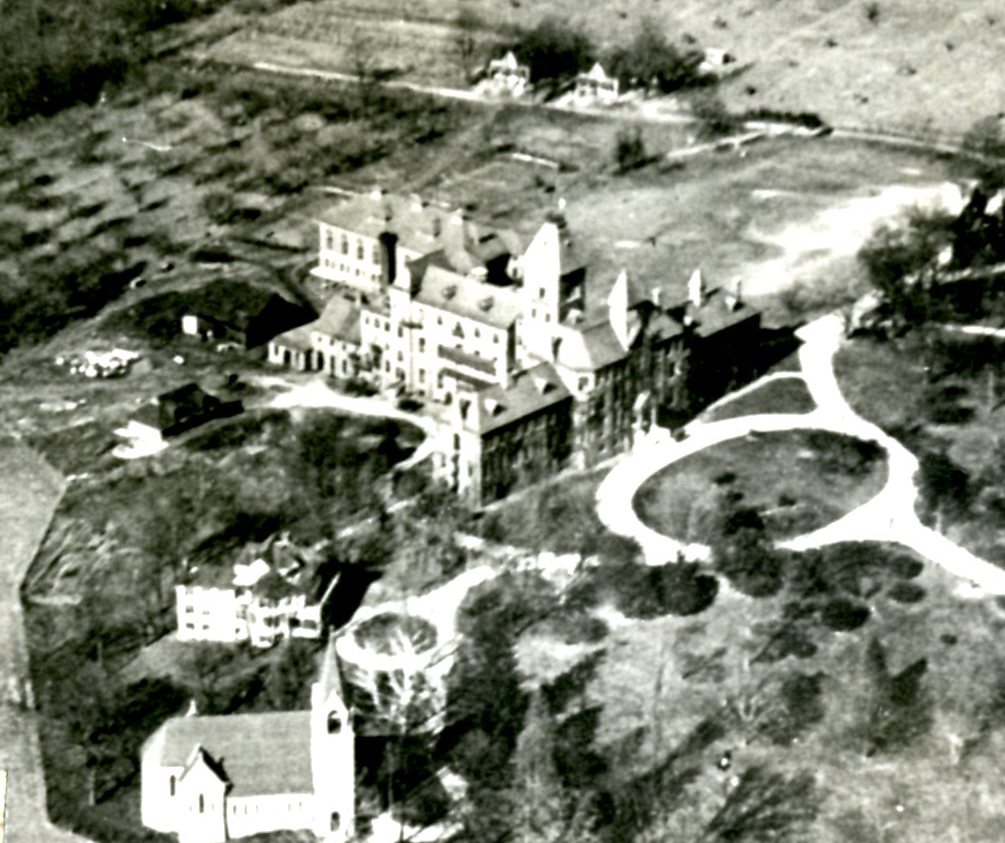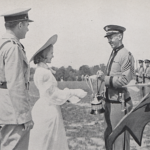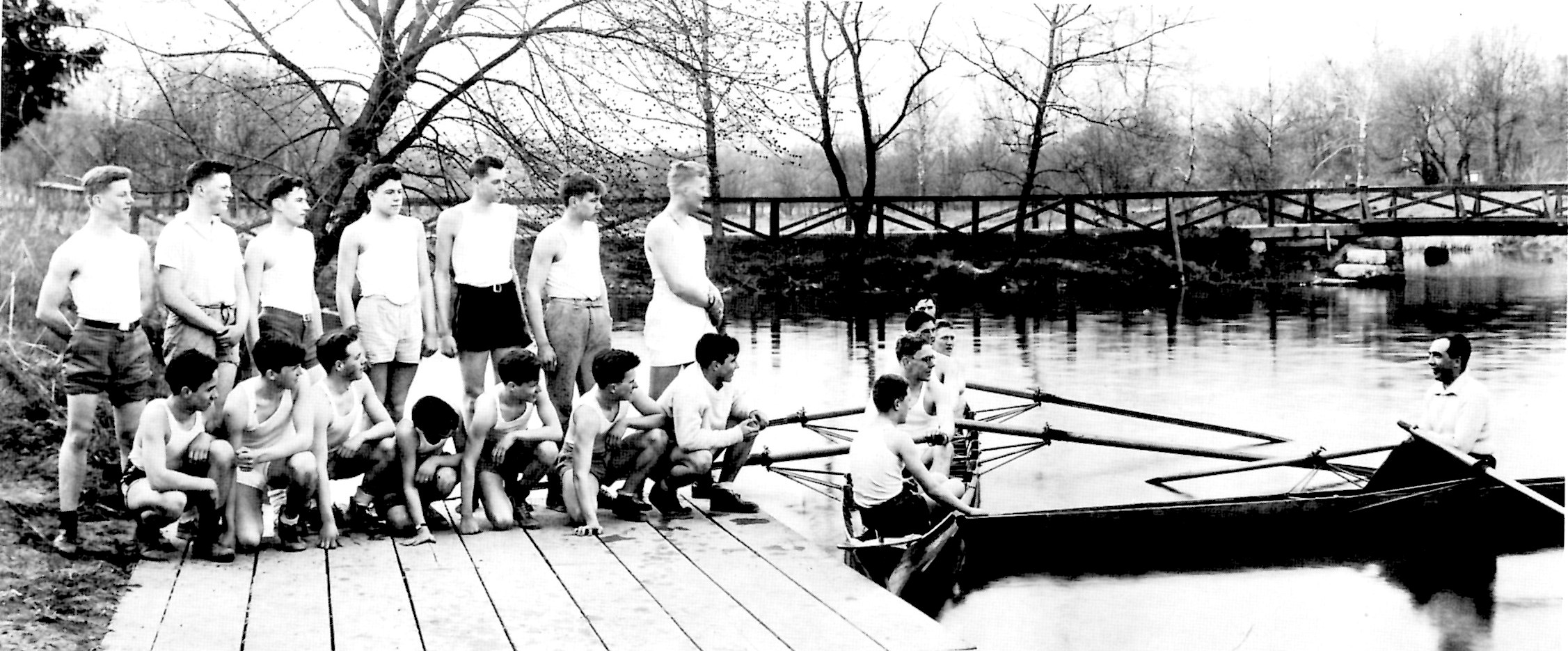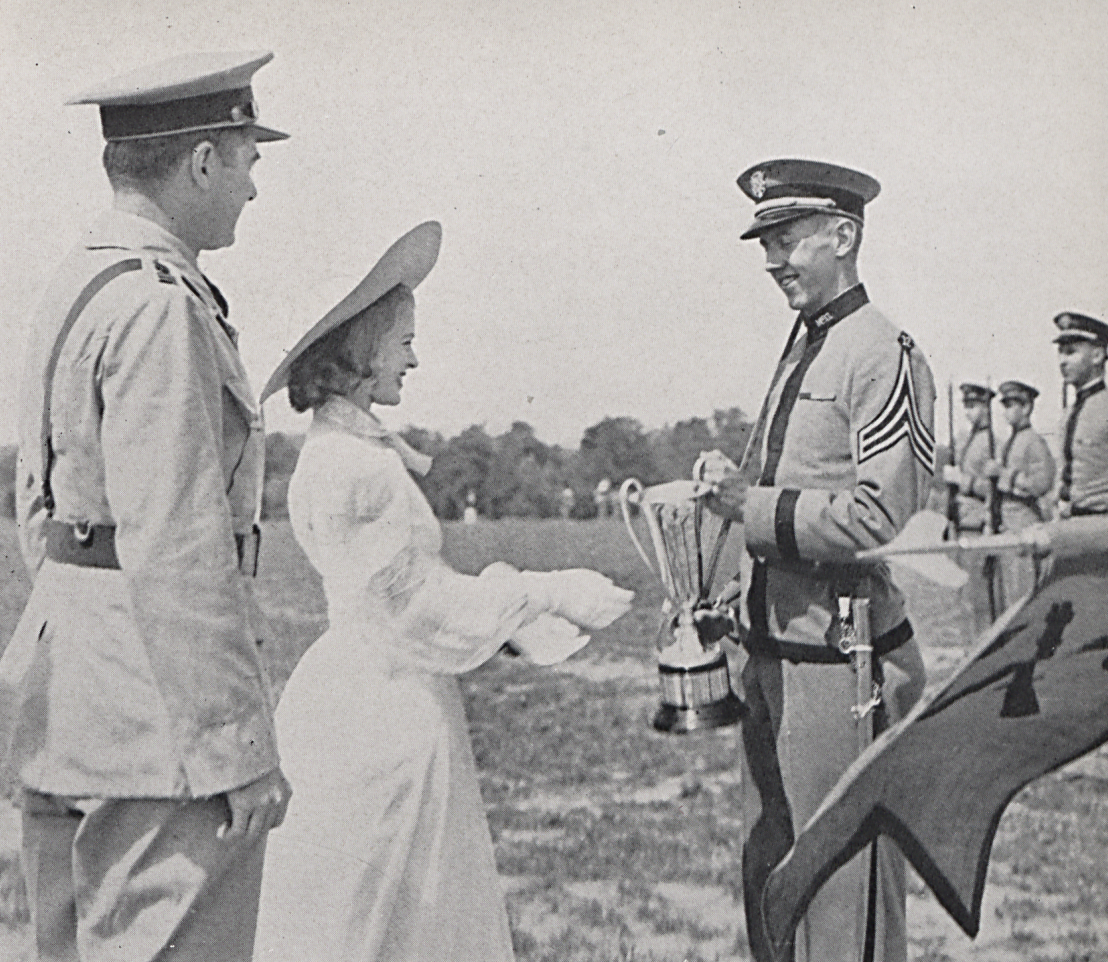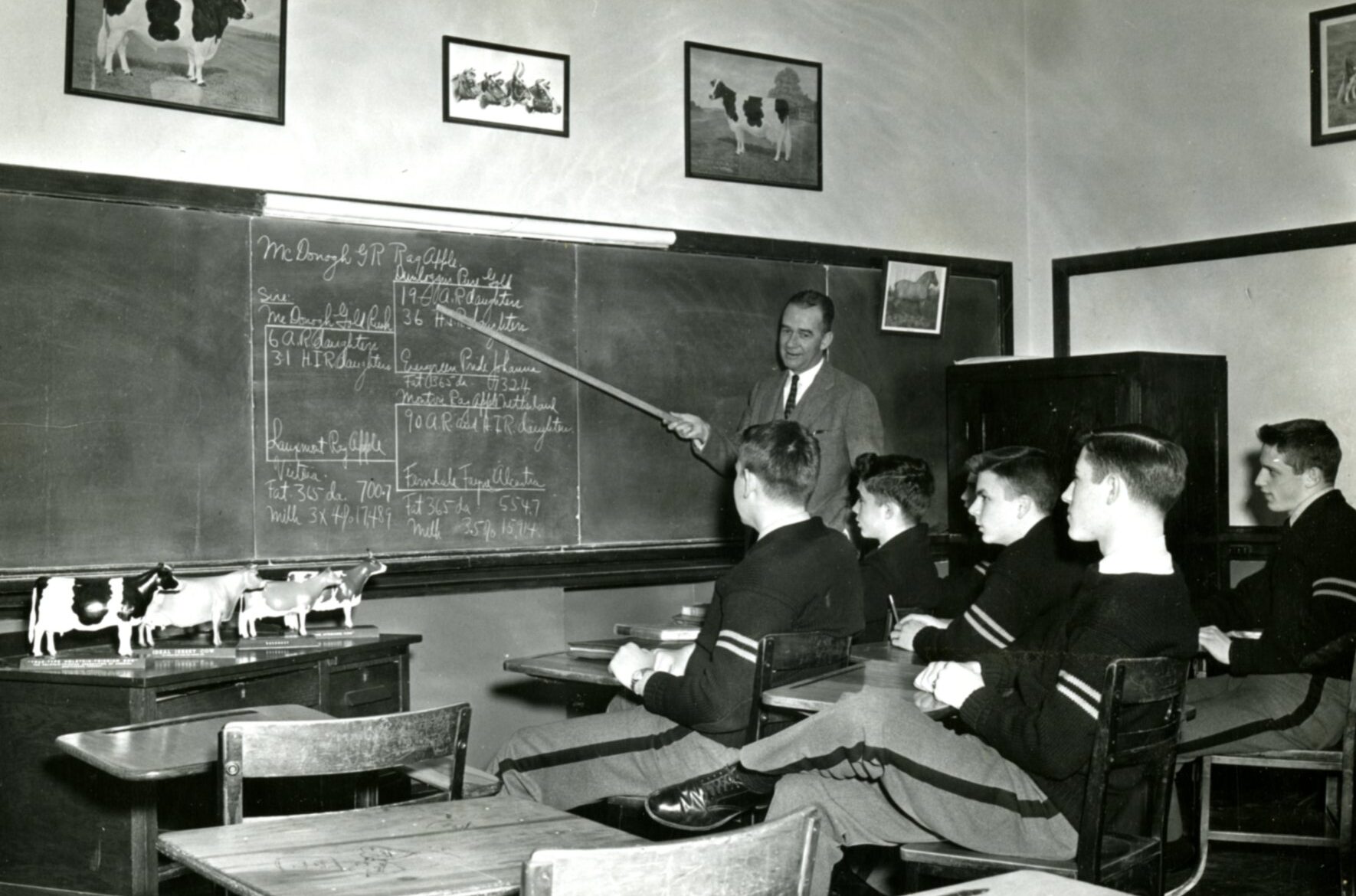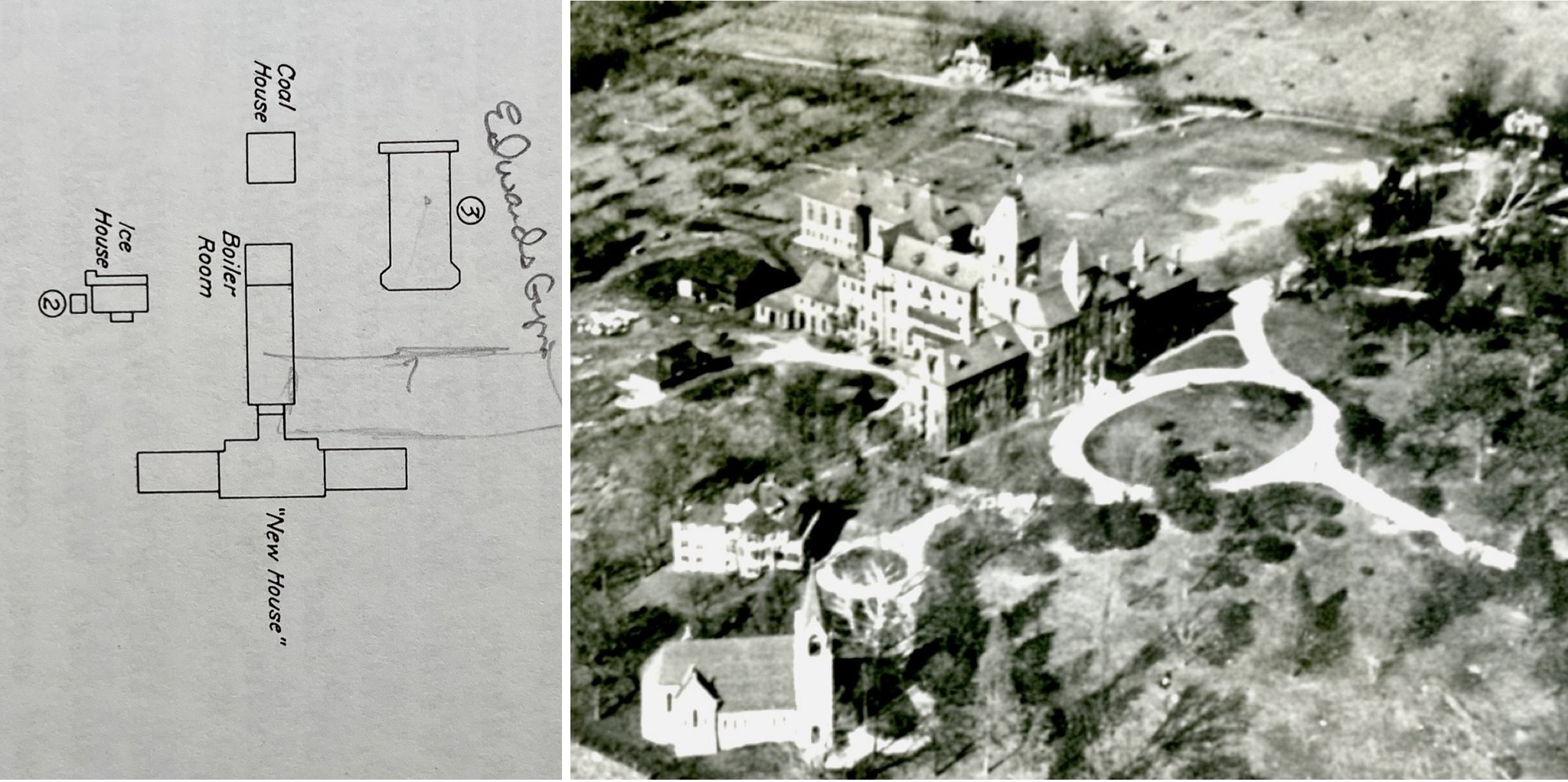Ice cut in the winter was expected to last through the summer. Once enough ice had been harvested and the ice houses were full, the boys were allowed to skate on the pond.
Accounts from The Week tell the story:
What was kept in the ice house?
January 3, 1885: On Saturday, December 13, the old ice house near the new building was destroyed. For some time after the school was opened this house was used, and when the first boys came it was the only ice house here. Pretty soon the one near the coal bins was built. This did not permit the keeping of large quantities of meat, and when we began to kill cattle for our own use the ice house near the lake was made. The stone walls were there already, and a roof was put over them, and a meat box built inside.
When was the ice harvested?
February 23, 1889: The weather has not been cold enough for any length of time for the water to freeze very much. The thickest ice that we have had was about four or five inches thick. Mr. Clousher has had ice cut several times since Christmas and twice before Christmas. The ice that was cut before Christmas was only about three inches thick. Most of the ice was hauled up to the ice house near the new building, and some was put in the ice house near the Colonel’s house. Last year the boys had to break the ice up when it was put into the ice house, but they have only had to do it once or twice this year. The boys used to skate on the lakes whenever they were frozen over, but Mr. Clousher told them not to do so until after he had gotten all the ice he wanted. About a week ago he told the boys they could skate whenever they wanted to now, as he had all the ice he wanted. The ice house near the new building is full and the ice house near the Colonel’s house is now also full. This house is old and rickety.
What happens when there is not enough ice?
January 7, 1899: On Tuesday, January 3, Mr. Fringer began to haul ice again. This time it was between five and six inches thick, but not entirely solid, some snow being mixed with it. For all that it was good ice. He finished filling the small ice house that day. The big house had been filled before. So now the ice hauling is over for this season. Only once in the twenty-five years that have passed since the school began have we failed to get ice enough in the winter to last through the following summer. This was in the winter of 1889 and ’90. The following summer the Trustees had to buy manufactured ice enough to last through the summer. It cost over a thousand dollars.
What happened after the ice was cut from the pond?
January 15, 1901: The wagons loaded with ice are brought up the inclined plane to the level of the doors of the ice houses. A chute, or trough, is run from the wagon into the house. Then the men throw the ice into the chute and it slides into the house, where the men break it into small pieces and distribute it evenly around and see that it is well packed. The men work so steadily that as soon as one empty wagon is pushed out of the way a loaded one is ready to take its place. Most of the large house was filled before Christmas, and the small one was filled the second week in January. It remains to finish filling the larger house. This was not done in the second freeze because the ice became so weak that the men could not work on it, so Mr. Fringer decided to postpone filling it until another freeze.
What was considered a good harvest?
January 12, 1910: On December 20th Mr. Fringer began cutting ice. This ice was of very fine quality, but it averaged only from three to five inches in thickness. He finished this cutting on the following Wednesday. He got seventy-four loads in all. Twenty-four loads were put into the small ice house. The rest, fifty loads, was put into the large ice house. While we were on our vacation the lake froze again. Soon after this it snowed, and the snow froze with the ice. Mr. Fringer did not cut this ice, but preferred to wait. Moreover, it would have been very hard to haul the ice, for the snow was very deep. On Monday, January 10th, Mr. Fringer cut ice again. This time it was about a foot in thickness, and he brought up forty-eight loads. One load was put into the small ice house, forty loads were put into the large ice house, and seven into the reservoir by the blacksmith shop. He could have got a number of loads in addition to what he got from this last freezing, but he did not need it. He finished on the 11th. There were twenty-two days from the day he started till the day he ended. One hundred and twenty-two loads were hauled, ninety loads for the big ice house, twenty-five for the little ice house, and seven for the reservoir. Mr. Fringer says the ice which he harvested this year is of the best quality he has ever seen.
Where did the ice come from?
January 3, 1927: The “Lake In The Woods,” which is within sight of the Athletic Field, has, due to the cold weather, been transformed to an Ice Pond. The pond which is kept dry in the summer, was refilled with water some time ago. It is valuable in two ways. First, the boys enjoy about two months of Ice Skating. This is very fine sport for some of the fellows. Second, about the latter part of February, the farm help, with the help of some the of older boys, cut the ice into cakes and haul it up to the ice house. In this way we get our summer’s supply of ice. After the ice is taken up, some of the smaller boys build themselves small “rafts,” which they use to venture to the middle of the pond. In this sport, it is nothing unusual to hear someone “falling in.”
